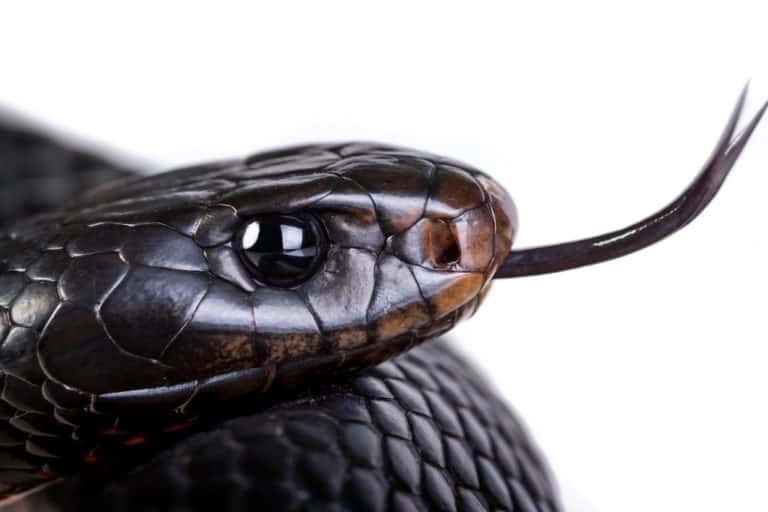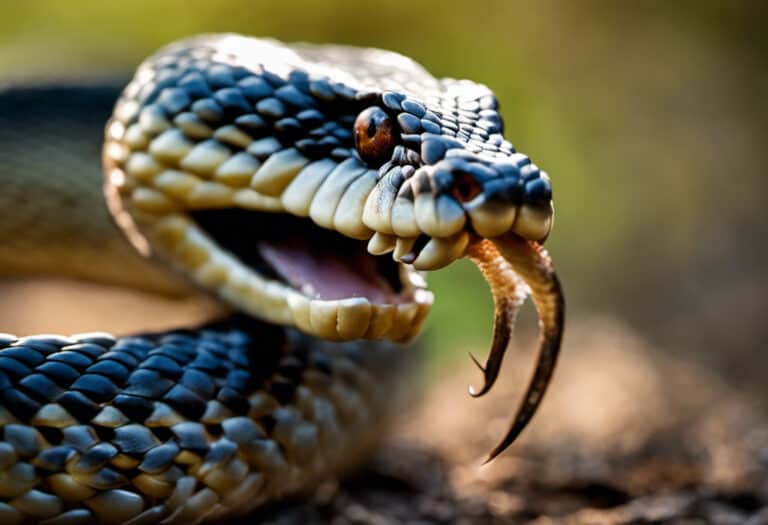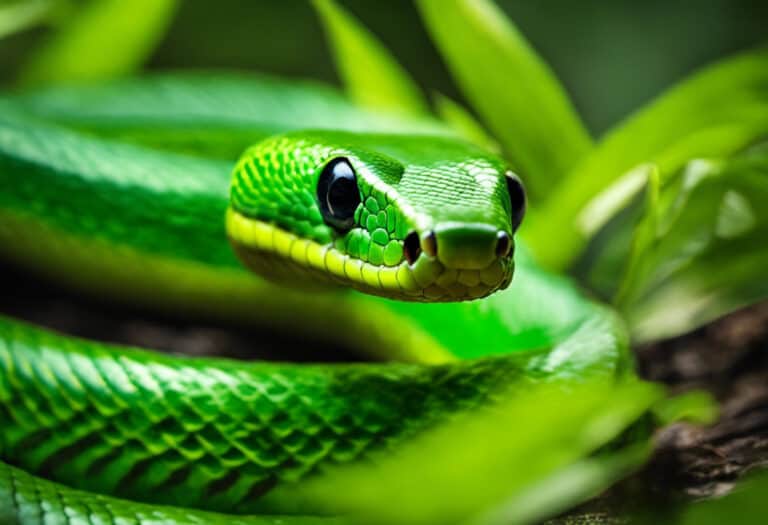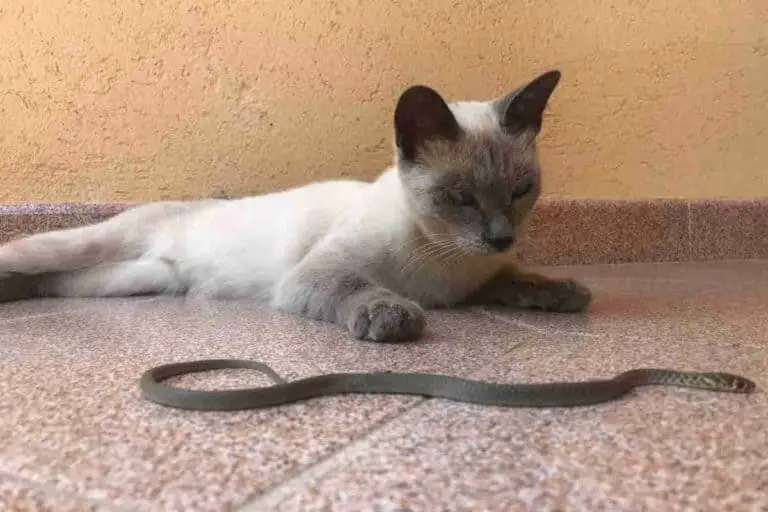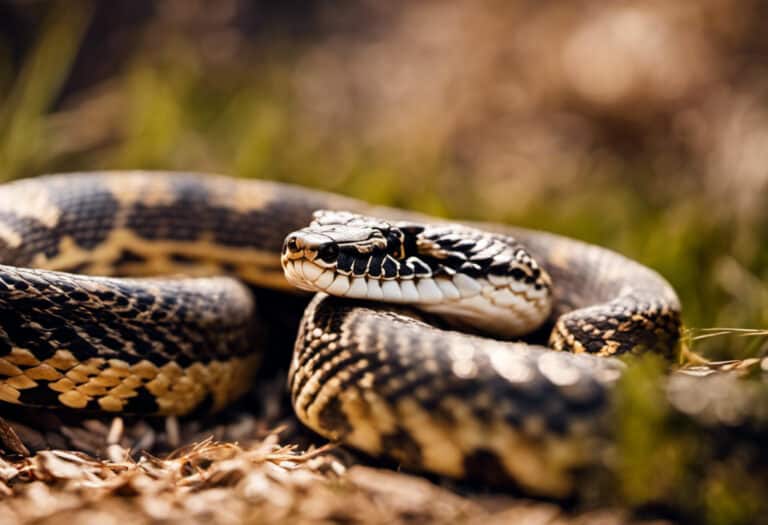Do King Snakes Rattle Their Tails?
Do you ever wonder if king snakes rattle their tails like rattlesnakes?
Join us on a fascinating journey as we explore the behavior of king snakes and uncover the truth behind this intriguing question.
Known for their ability to consume rattlesnakes, king snakes have captivated the interest of snake enthusiasts and herpetologists.
Through scientific research, expert opinions, and anecdotal evidence, we will shed light on whether or not king snakes possess the tail-rattling behavior commonly associated with their venomous relatives.
Get ready to unravel the mysteries of king snake behavior.
Key Takeaways
- King snakes are highly adaptable and can be found throughout the west coast from Oregon to Baja Mexico.
- They are constrictors that use mimicry, such as tail rattling and coiling, to ward off predators.
- King snakes have a wide diet that includes rodents and other reptiles, including venomous snakes, and they are highly resistant to venom.
- The behavior of a baby kingsnake can suddenly change to become aggressive, and it is important to observe and understand snake behavior to provide appropriate care.
Habitat and Distribution of King Snakes
King snakes are highly adaptable and can be found throughout the west coast from Oregon to Baja Mexico, often near streams.
They’ve a wide distribution and can be spotted in a variety of habitats, including fields, forests, and deserts. In fact, they’re one of the most widespread species of snake in the United States.
Although they can be found in various environments, they’re particularly limited to arid areas of California. King snakes also have the widest elevation range, from sea level to around 3,000 ft.
Their ability to thrive in different habitats and withstand different climates is a testament to their adaptability as a species.
Behavior and Adaptations of King Snakes
You may be interested to know that king snakes have a wide range of behaviors and adaptations. These fascinating creatures possess predatory habits and defense mechanisms that make them truly remarkable.
-
Predatory Habits: King snakes are constrictors, meaning they squeeze their prey to immobilize and consume them. Their main diet consists of rodents and other reptiles, including venomous snakes. They’re highly resistant to the venom found in rattlesnakes, copperheads, and cottonmouths.
-
Defense Mechanisms: King snakes have developed various defense mechanisms to ward off predators. They employ mimicry, such as tail rattling and coiling, to mimic the appearance and behavior of venomous snakes. When bothered, they can become rather aggressive, displaying their determination to defend themselves.
These behaviors and adaptations showcase the freedom and resilience of king snakes in their natural habitats. Their ability to hunt and protect themselves is truly awe-inspiring.
Taco, the Resident California Kingsnake at ZooMontana
If you visit ZooMontana, you’ll have the chance to meet Taco, a California kingsnake who arrived at the zoo in 2018 as a pet surrender. Taco, like many animals in captivity, has undergone training techniques to adapt to his new environment.
Captivity can have both positive and negative impacts on animal behavior. In the case of Taco, he initially displayed aggressive behavior but with training, he’s become an ambassador animal used for educational programming.
Training techniques such as positive reinforcement and desensitization have helped Taco adjust to his new surroundings and interact with humans in a safe and controlled manner.
However, it’s important to consider the potential long-term effects of captivity on animal behavior and ensure that their physical and psychological needs are met.
Other Animals at ZooMontana
When visiting ZooMontana, you’ll have the opportunity to see a variety of fascinating animals, such as alpacas, American badgers, American minks, Amur tigers, bald eagles, ball pythons, bearded dragons, bison, Canada lynx, and cane toads.
-
The alpacas at ZooMontana were retired from the show circuit and now enjoy sparring with each other, creating a playful and lively atmosphere.
-
The American badger named Uki has an inspiring story, being brought to the zoo by the state after being found next to her shot mother. Witness her resilience as she adapts to her new environment.
-
Ivy, the American mink, was rescued from a fur farm and loves playing with ice cubes and sleeping with her stuffies. Experience her joy and appreciation for a life of freedom and care.
-
Be captivated by the majestic Amur tigers, Sofi and Jasmine, who were born in Florida and moved to the zoo in 2014. Observe their grace and power as they roam their spacious enclosure.
At ZooMontana, you’ll not only learn about these incredible animals but also witness firsthand the importance of preserving their freedom and natural habitats.
Vietnamese Walkingstick and Wolverine (No Information Provided)King Snakes
The Vietnamese Walkingstick and Wolverine are two types of snakes that aren’t discussed in the provided information. Unfortunately, there’s no information available regarding these specific snakes as pets.
However, let’s turn our attention to King snakes as pets and their care. King snakes are popular choices among snake enthusiasts due to their unique behaviors and characteristics. As non-venomous snakes, they’re relatively safe and easy to care for.
When keeping a King snake as a pet, it’s important to provide a suitable tank and environment that mimics their natural habitat. They require a diet consisting of rodents and other reptiles, including venomous snakes. Additionally, observing and understanding their behavior is crucial in order to provide appropriate care and address any potential issues.
Snake Behavior and Personalities
Snake behavior and personalities can be fascinating to observe. Just like humans, snakes have unique personalities and behaviors that can vary from individual to individual. They can display a range of behaviors, from calm and docile to aggressive and defensive.
Snake behavior changes can occur for various reasons, such as stress, environmental factors, or even health issues. It’s important to pay attention to these changes and try to understand the underlying cause.
Whether you’re a snake enthusiast or simply curious about these incredible creatures, observing and learning about snake behavior can be a rewarding experience. Some snakes may be shy and prefer to hide, while others may be more outgoing and curious.
Snakes can display defensive behaviors, such as hissing, striking, or even puffing up their bodies to appear larger. Some snakes may exhibit more aggressive behaviors when they feel threatened or cornered. Snakes can also show curious and exploratory behaviors, especially when they’re in a new environment.
Baby Kingsnake Behavior
When it comes to baby kingsnake behavior, sudden changes in aggression can be a cause for concern. These young snakes may exhibit calm and friendly behavior initially, but then suddenly start striking and shaking their tails.
Understanding and addressing this behavior is important for the well-being of the snake, and seeking advice and experiences from others can be helpful in finding potential solutions.
Sudden Aggressive Behavior
If you notice sudden aggressive behavior in your baby kingsnake, it’s important to address this change in behavior and seek advice from experienced snake owners. Aggression in baby kingsnakes can be managed effectively with the right approach.
Here are some key points to consider:
- Stay calm and avoid provoking the snake further.
- Assess the snake’s environment for any potential stressors or triggers.
- Provide a suitable tank with proper temperature, humidity, and hiding spots.
- Consult with experienced snake owners or herpetologists for guidance on handling and training techniques.
Managing aggressive behavior in baby kingsnakes requires patience, knowledge, and a willingness to adapt. By implementing these strategies, you can create a safe and comfortable environment for your snake, allowing it to adjust and potentially reduce its aggression over time.
Seeking Advice and Experiences
You can find valuable advice and experiences from other snake owners who have dealt with similar sudden behavior changes in baby kingsnakes. It’s important to understand that snakes, like any other animal, can display different behaviors and personalities.
If you’re experiencing sudden aggressive behavior from your baby kingsnake, there are a few snake handling techniques and snake training methods that you can try.
Here is a table summarizing some potential approaches:
| Approach | Description |
|---|---|
| Give the snake space | Allow the snake to adjust to its new environment and reduce stress. |
| Seek guidance from experienced snake owners | Reach out to knowledgeable individuals who have dealt with similar situations for advice and recommendations. |
| Provide a suitable tank and environment | Ensure that the snake has a proper enclosure with appropriate temperature, humidity, and hiding spots. |
| Observe and understand the snake’s behavior | Take the time to study and learn about your snake’s specific needs and preferences. This can help address any aggressive behaviors. |
| Consider professional help | If the aggression persists or worsens, consult with a reptile veterinarian or an experienced herpetologist for further guidance. |
Dealing With Aggressive Snakes
Dealing with aggressive snakes can be challenging, but seeking advice from experienced snake owners can provide valuable insights and guidance. Understanding snake behavior is crucial in handling and managing aggression. Here are some key points to consider:
-
Environment: Ensure the snake’s tank is suitable and provides a sense of security. A well-designed habitat can help reduce stress and aggressive behaviors.
-
Handling Techniques: Learn proper handling techniques to minimize stress and potential aggression. Avoid sudden movements and handle the snake with confidence and care.
-
Observation: Pay close attention to your snake’s body language and behavior. Signs of aggression may include hissing, striking, and tail rattling. Understanding these signals can help prevent aggressive encounters.
-
Professional Help: If the aggressive behavior persists or worsens, consult a reptile veterinarian or a snake behaviorist for expert advice and assistance. They can provide specific guidance tailored to your snake’s needs.
Seeking Advice and Experiences From the Community
When faced with sudden behavior changes and aggression in your baby kingsnake, seeking advice and experiences from the community can provide valuable insights.
By reaching out to experienced snake owners, you can gain a deeper understanding of potential causes and effective strategies for dealing with these issues.
Embracing the collective knowledge and expertise of the community can guide you in providing the best care for your snake.
Sudden Behavior Changes
If you notice sudden behavior changes in your baby kingsnake, it’s important to observe and understand the underlying causes. Dealing with aggression in snakes can be challenging, but seeking help from experts is crucial. Here are four important points to consider:
-
Observe and assess the situation: Take note of any environmental changes, such as temperature or humidity fluctuations, which could be causing stress in your snake.
-
Consult with a reptile veterinarian: An experienced veterinarian can provide valuable insights and guidance on how to address aggressive behavior in your baby kingsnake.
-
Review your husbandry practices: Ensure that your snake’s enclosure is appropriately set up with suitable hiding spots, proper temperature gradients, and a secure lid to create a stress-free environment.
-
Consider professional training: Consulting with a reptile behaviorist or experienced snake handler can offer helpful techniques and strategies to manage aggression in your baby kingsnake.
Dealing With Aggression?
To address aggression in your baby kingsnake, it’s important to understand the underlying causes and seek guidance from experts. Dealing with sudden aggression in snakes can be challenging, but by understanding aggressive behavior, you can take appropriate steps to address it.
Aggression in snakes can be triggered by stress or feeling threatened. It’s crucial to observe your snake’s behavior and provide a suitable tank and environment that meets its specific needs. If your baby kingsnake shows sudden aggressive behavior, it’s recommended to give it some time alone for about a week.
Seeking advice from experienced snake owners can also provide valuable insights. Remember, understanding your snake’s behavior and providing appropriate care are key to addressing aggression effectively.
Conclusion and Thank You
You appreciate the help and guidance from the community regarding your snake’s sudden behavior changes and thank everyone in advance for their time.
-
Seeking advice and experiences from others who’ve dealt with baby kingsnake aggression evokes empathy, as it shows the owner’s concern for their pet’s well-being.
-
Recommendations on effective snake handling techniques create a sense of empowerment, allowing the owner to feel more in control of the situation.
-
The gratitude expressed towards the community for their assistance fosters a sense of camaraderie, reinforcing the freedom to seek and share knowledge.
-
The mention of the owner’s unexpected and concerning experience with their snake’s behavior change elicits curiosity and concern, encouraging readers to offer their insights.
Thank you all for your support and insights. Your expertise and willingness to help are greatly appreciated.
Frequently Asked Questions
What Is the Average Lifespan of a King Snake?
The average lifespan of a king snake can vary depending on several factors. Factors such as diet, habitat, and overall health can all influence their lifespan.
Can King Snakes Climb Trees or Other Vertical Surfaces?
Yes, king snakes can climb trees and other vertical surfaces. They use their strong muscles and scales to grip onto branches. While they cannot glide through the air or swim in water, they are adept climbers.
Are King Snakes Known to Be Good Escape Artists?
King snakes are not known to be good escape artists. They have the ability to squeeze through small openings, but their tendency to burrow underground makes them less likely to escape.
How Often Do King Snakes Need to Eat?
King snakes typically eat every 1-2 weeks, depending on their size and metabolism. Their optimal diet consists of rodents and other reptiles, including venomous snakes. Feeding habits vary, but regular meals are essential for their health.
Are King Snakes More Active During the Day or Night?
King snakes are more active during the day, hunting their prey in daylight. Their behavior changes at night when they become less active. They rely on their keen sense of smell to locate food during both daytime and nighttime.
Conclusion
In conclusion, the mesmerizing world of king snakes has been unraveled, revealing their fascinating behavior and adaptations.
And now, the burning question has been answered: do king snakes rattle their tails? The answer is a resounding no! These incredible creatures don’t possess this unique characteristic, making them even more impressive in their ability to consume venomous rattlesnakes.
With their remarkable skills and captivating presence, king snakes continue to amaze snake enthusiasts and scientists alike.
